“Tradition is not the worship of ashes but the preservation of Fire.” – Gustav Mahler
Atlas Overthrown
Atlas, the burden-bearer, the world-holder, is not what he seems. Atlas does not represent a heroic burden-bearing of the weight of the world’s concerns, like some pagan Christ figure. Nor does he represent a noble aristocratic order of Platonic guardian-rulers who must, in some confabulated inversion, proliferate the Promethean instincts on behalf of common people. Atlas represents an ossified order. He represents Man’s burden of carrying the “entropic down-winding” of the world as that which is overthrown. A deterministic, rationalist structure that is no longer creative and a scientific materialism that has calcified into a kind of superstitious bureaucracy. Atlas’ burden reminds us of the inevitable cyclicality of Promethean achievements which have been captured by Epimethean popularization, whereby they drift into a “standing reserve” and are collateralized and mortgaged, but no longer refreshed or revitalized.
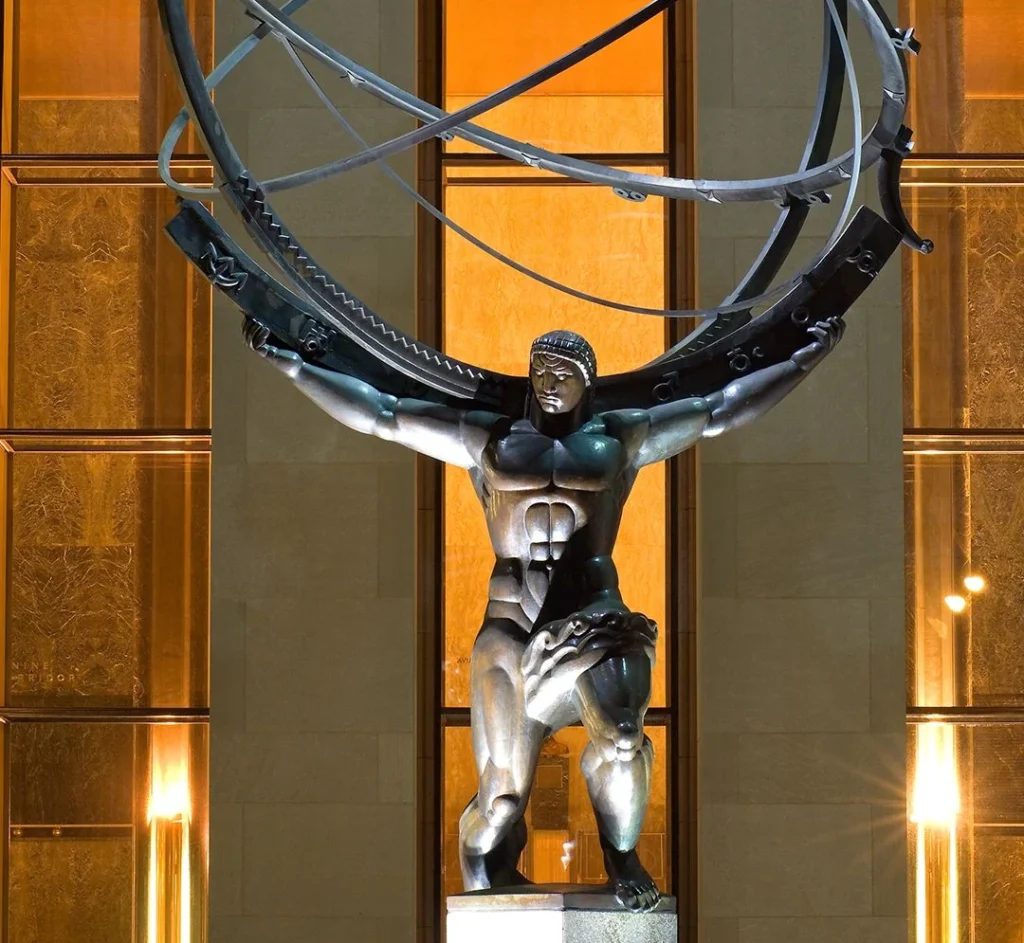
The order of Atlas in our world must be overcome and torn down. This is the sovereign duty of the Promethean soul. It must be achieved by reinfusing science and technology with myth, with imagination, and with the dangerous, world-altering power of Prometheus in both deeply meaningful aesthetic and symbolic ways as well as radical acts of creative destruction. Each of these Promethean locomotives imbue the substrate of the world with a sense of Dasein, of the being of oneself through acts of world-discovery and self-sculpting.
The West calls for a new “mythotechnological” regime to re-enchant and revitalize humanity, where humanity regains agency not just through data and reason, not through regurgitation of the static forms of bygone ages, but through the power of symbols, archetypes, and a renewed metaphysics.
But there is also much warfare in Prometheus. Fatalistic Olympus and the exhausted order of Atlas conspire to keep Man from heroic acts. The Colossus of Prometheus will look forward over the horizon, into the future, as a self-contained and self-originating locomotive of “mythopoetic” and “mythotechnological” imagination. As the radical, intransigent will which fights for these resources within Man. He fights for life itself and does not apologize for the violence he does on behalf of Man. He leads Man forward over the horizon. He does not gaze upward with teary, childlike eyes seeking Zeus’ acknowledgement that he stole fire, secretly hoping Zeus will bless him by recognizing his feat.
In this life, the sky is empty. The incredible reality of Man’s power is known by this whirling sky, empty of gods. But the horizon is full of promise.
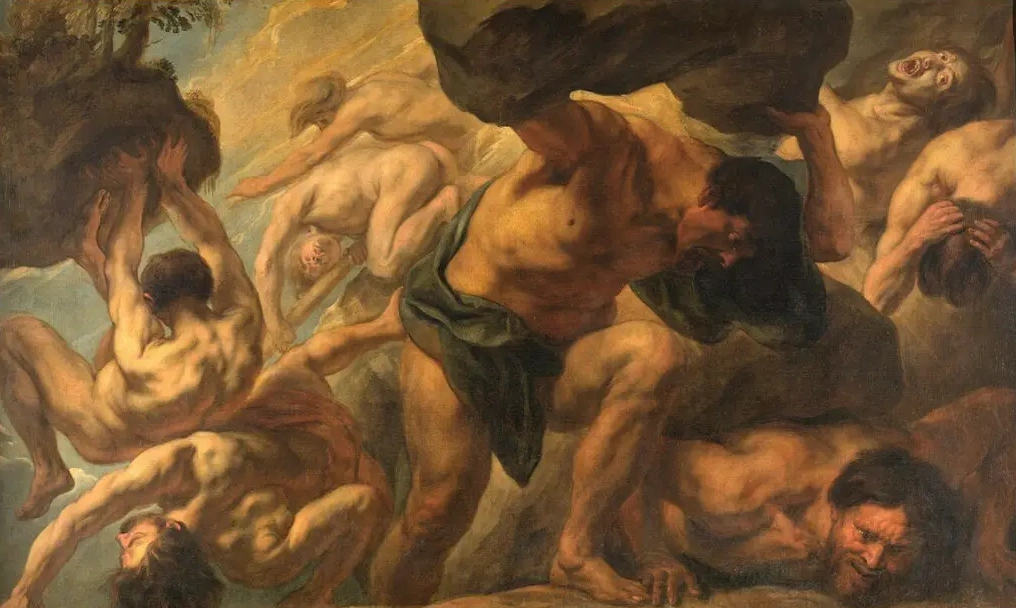
Prometheus, the Soul of the West
Prometheus represents the fundamental power one recognizes when he looks up at the sky and finds it empty, empty of gods, and knows the full existential weight and responsibility falls on his shoulders. When there is no sky to look up to, it is within us that the universe must be born. The stark, vivid immediacy to find oneself alone in the cosmos is of incredible, brilliant freedom. He sees himself as living within the future. And he knows it falls to him to imprint on this lonely world a sense of meaning. This is the true heart of American Manifest Destiny. It is our job to make this spirit come to life in stone and bronze and futuristic metals. To call it forward out of the hearts of every onlooker.
It is a call to reject consensus mediocrity because consensus mediocrity conspires with the tyrant.
It is in this sense that Prometheus as Titan of the West and of Artists is taken out of the mythological fairy tale and dramatized as a new figure, within a new kind of contemporary mythology or folklore. He is the totem of our age, of the new Golden Age. A new Republic, a new West, a new Civilization.
Set against this forward-moving, creative locomotion, classicism is not much more than plagiarism, calling backwardly on the past in what Heidegger called a kind of “standing reserve.” Classical art, like all great works from the past, were not produced so that we could become classicists. Those artists gave us beauty in sculpture and music and architecture so that we could be more ourselves today, in the now. Customary forms reinforce the illusion that there is a higher authority taking care of everything, that there is a plan, a pre-established meaning, an already-provided purpose by someone from the outside to which we only need subscribe (a state, a church, an ideology, a guru, school or tradition, etc.). Prometheus represents the end of any excuse which Man had on this lonely earth spinning in the dark. What we create must not evoke bromides nor the notion that we can outsource anything about our lives.
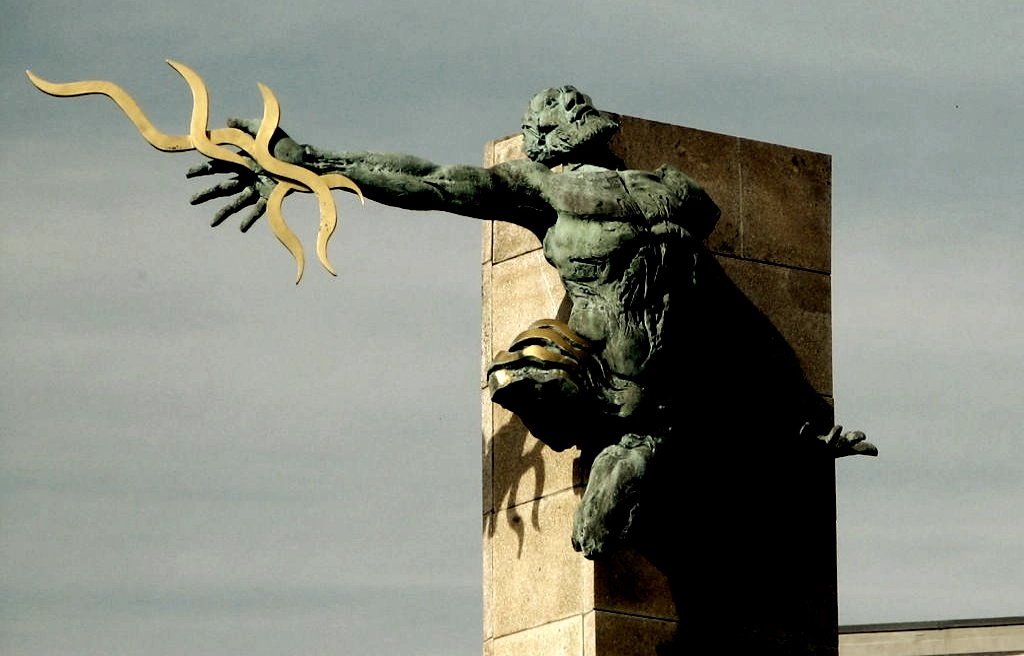
In order to evoke this sense of power and human reality, we must not lull the viewer to sleep in the idea that they already understand what the work is meant to convey, because the work is a simplistic reference to what the eye is already so accustomed to seeing (i.e. the ancient Greek myth of Prometheus). Instead, our duty is to make this deep, tremendous meaning be vitalized as visceral and experiential in stark departure from childhood fairy tales and visual forms which the eye would readily expect, made to lull and anaesthetize us instead.
Prometheus speaks to us that being alone, misunderstood, existing “a-priori” to others in an almost separate plane, and of course being feared, hated and targeted, is the price of his overcoming. He is the titan of self-distinctiveness and self-differentiation.
Mighty works of our Age must in some sense scare men because they expose us as those who live inside commonly held suppositions. A truly powerful soul/mind which with militant Promethean integrity creates its own values and abandons bromides and ready-made “truths” strikes fear into collective mediocrity.
He is as dangerous to Washington DC as he is to Beijing or Davos. But he is also dangerous to our former selves, the selves we are transcending when we summon the will which great art must invoke. The Promethean mind is a mind which terrifies because it does not bend. His path is lonely, tough, but absolutely transformative and necessary. And thereby, great art must be novel, not soporific.
In the case of Prometheus, being racked to the mountainside with nothing but the empty winds and torture, sees all the collective mediocrities wiped away. Prometheus confronts us; he terrifies us with the reality of our true nature and the impossible freedom which great artworks represent in encapsulated form. He looks to the future rather than up at the gods exclaiming his forward-moving, natural will to power of Man’s locomotion alone, rather than in defiance of Zeus. He is the non-contingent, the unmoved mover. Prometheus tells Hermes “I care nothing for Zeus,” – he will not renege on the forward moving flywheel of Man’s agency. He will not look up for permission or even bother to act indignant or defiant to a world he has long bypassed. When onlookers see great works (as the Colossus) for what they truly are, they will never think in the same way again. The power will resonate within them with something inarticulable and unforgettable. The realization of the Promethean soul causes a rupture in who we know ourselves to be. It is not in peace, stability or order which a human being transforms, it is in pain and discomfort. Man’s suffering is not part of a divine plan which will justify anything in the end. We are alone. The Almighty will not come to save your soul. There is no ready-made meaning. Great art is not here to placate us. It is here to call and inspire and invoke in us the taking of new aesthetic and new spiritual territory, and to cultivate those lands with earnest cherishing. It says to us: “So.. Now… you are the creator.”
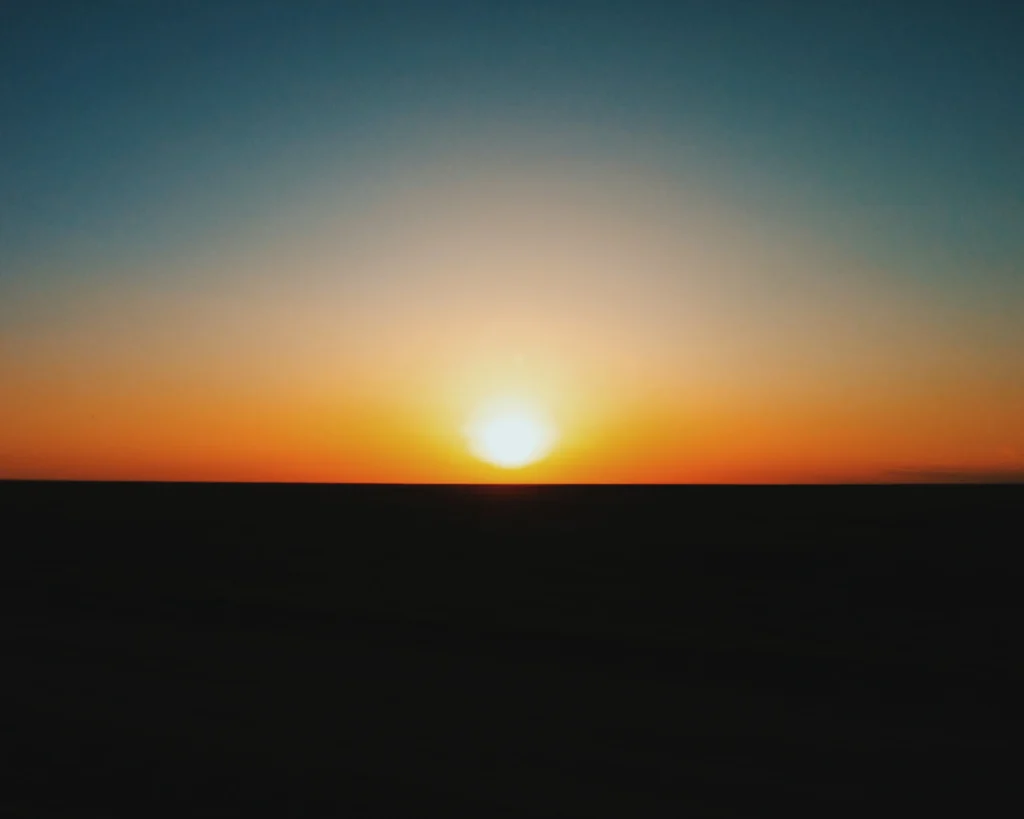
We are pushed into the abyss of radical freedom. This is it – that at this abyss, the ancient wildness of Man and the incredible song of beauty and warfare he must compose to meet these existential terrors with nobility – at this horizon of radical freedom there is the great power of Man. His birthright which he must claim. We cannot follow commandments. We create values. We do not “obey,” we surpass ourselves. There is no more absolution, no salvation. The full weight is on our shoulders. This ignites a great sense of power. The birth of brutal autonomy. Either you build yourself, either the West builds itself, or it sinks. This is the true American Dream. This is the true American Ideal. This is true American Power. This is what American Colossus must be also.
We author a new mythos. Powerful artistry in our age and this Colossus heralds the emergence of a new way of being. A new form of Man – one who does not live by the herd, who does not need approval or permission. A being who creates his own beauty and meaning, and his own morality, who lives above conventions and follows only his own will, his own mythopoetic vision, and creates according to his own mythotechnological ethos.
The Solitary West
The world will not come to save the West. Once the automated future is secured by a manufacturing system that mocks individual sovereignty, republican values, natural rights, etc., the race is run and humanity reverts to slavery again.
Humanity never had any slow, pleasant evolution. He only had rupture and radical transformation. Rupture is the required, nonlinear fashion of unexpected, explosive change that generates the surplus which provisions the culture and economy in the face of depreciation and entropy-ridden, Epimethean collective mediocrity. Creative destruction is the only path remaining to a civilization teetering on extinction. The West remains the West only through creative destruction. This Promethean reality must be expressed in our great art works and come to life in new schools and traditions.
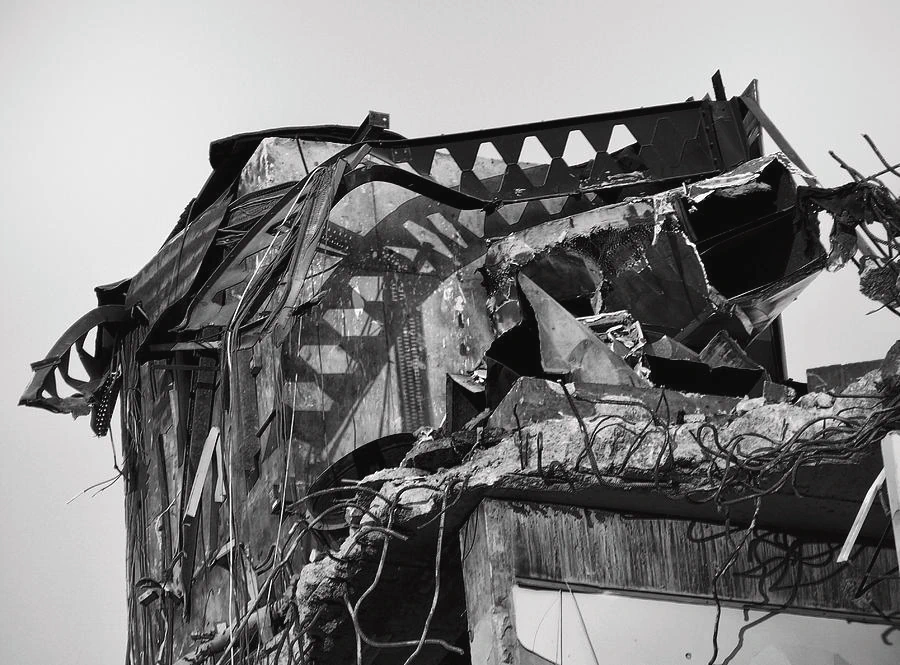
Prometheus’ exemplifies a mind which is unbreakable. It is unbreakable because he is the being who overcomes everything which binds ordinary man, and indeed which binds the petty caricatures of the gods. Guilt, obedience, herd morality, need for acceptance, reliance on others for what is to be liked and preferred, the asking for permission to exist. He is motivated by a deep core of beauty and love for what he creates, including Mankind who are his children. He creates his own laws on behalf of this meaning and beauty and lives by them with unbreakable integrity even if living against the entire world.
He does not adapt to the world, he imposes meaning onto the world. He does not ask “Is this allowed?” he asks “Is this worthy of me?”
Once we make the transformation from the first question into the second, the cascade of Man’s power begins to unravel and ignite. This is the original alchemical agent of Man’s heroic nature.
The higher he rises, the more he disturbs. The construction of oneself within the archetype of Prometheus is the most brutal one can face. And great art work must imbue this into us instinctively by the very fact of itself, as evidence of this already taking place within the artist himself. It requires of us to destroy everything that is not ours, not authored by ourselves, everything imposed on us by a rubric which rewards obedience and vilifies authenticity. And it requires of us that we imprint with our own poetic or technological vision the artistry and machinery geared to form greater, more abiding meaning onto the world. It means we are in the desert, we are stranded on the mountaintop. No one will rally for us or applaud us. We will endure the silence.
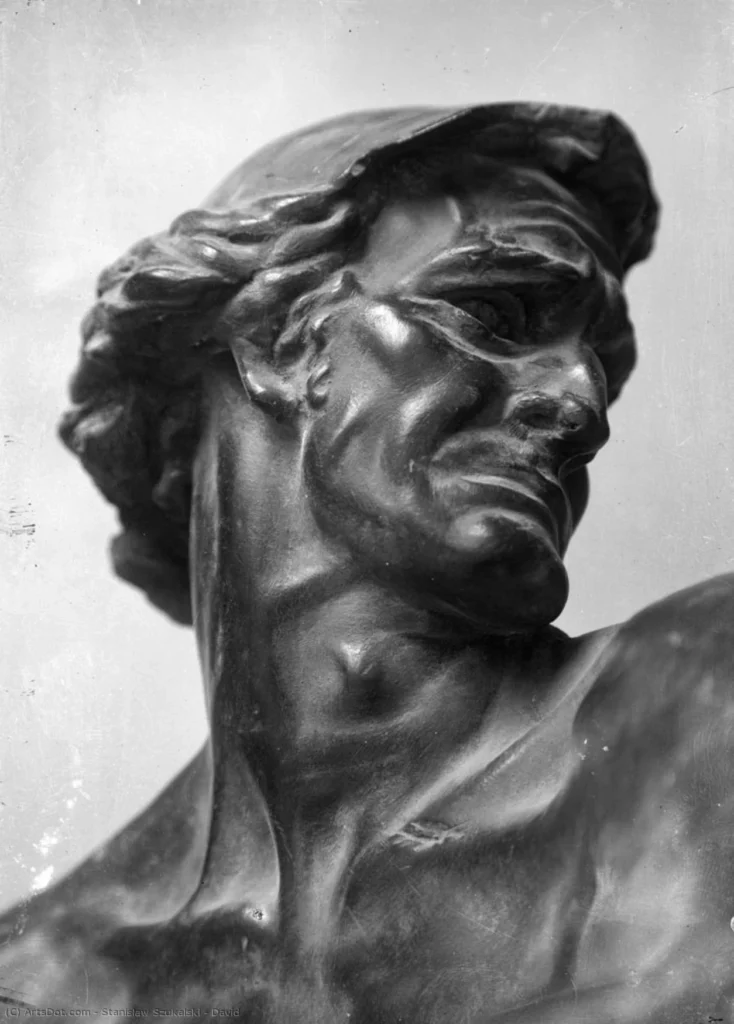
Prometheus and Civilization
To rebuild our civilization we must abandon the idea it will be achieved through comfort, cheap motivation, social media, counterfeiting into the endless unpaid credit for retirement welfare of the lifelong unproductive, etc. We must jettison the bigotry which calls us to ask the empty sky for life to be easier, and instead ask ourselves to be stronger, more original, more motivated by the vital primacy of our own living beings. It calls us to change our relationship with suffering – instead of avoiding it and denaturing ourselves, it calls us to recognize that it helps us to forge indomitable spirit. When we see ourselves as creator, not as servant, the way we think, act and feel transform completely. This spirit calls us to kill parts of ourselves which still beg for approval.
Unlike the ancient countries, Americans invented our country. We survived by reinventing it. The fundamental principle of our country as the front running nation of the West is innovation and the recognition of obsolescence. While most peoples flee from chaos, the West has in its DNA the capacity to walk within it. While most peoples beg for normality through superstitions and statism, the West creates greatness. Likewise, the duty of the artist is to call us to reevaluate what we think about strength and power through great aesthetic depth and splendor.
Indeed, America is not a thing but a process. But it is not an Apollonian process of standing back and regarding abstraction from afar. It is never a plaintive hope to be carried passively on the standing reserve of an outside provider. It is a Dionysian process of overcoming and ordeal and a dialectic war on reality to imprint Man’s vision on the world. America is not a depredated “new Rome” oppressed by a Jupiter full of slaves period America is an ongoing promethean apotheosis of triumph over the hind brain urge to plagiarize and mortgage.
Culturally it is the same: we must kill parts of our culture which are not worthy of a destiny of economic and technological preeminence – because slavery is the cost of failure. If we cannot take radical, principled stances, we are not worthy of freedom. And when we begin to become strong again, we will need to come armed with an ideology which prizes solitude and exceptionalism over agreeable, collective mediocrity. The new aesthetic of the West is sparking and coursing with the electricity of these tenants.
The West was once known for its abundant, overflowing scientific, aesthetic and economic progress. But the rate of progress has collapsed. Artists in the new aesthetic are called to embody the re-ignition of our cultural power. And the understanding of how we achieve it emanates from this interior, vital reality discovered when we see the sky is empty, the existential responsibilities fall on us alone in a realm of great freedom, and that we must individually imprint meaning onto the canvas of the cosmos. It emanates when we behold grand, powerful works of unapologetic artistic beauty and originality.
Gleaming Prometheus in bronze and flared natural gas will exemplify this.
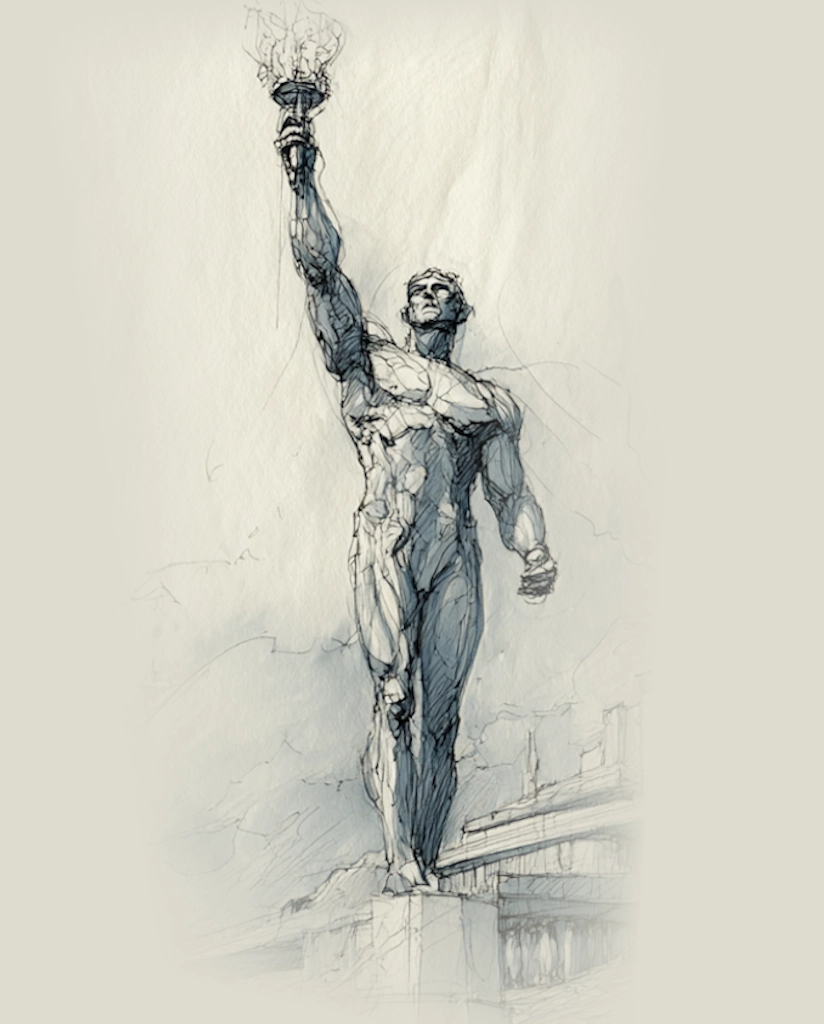
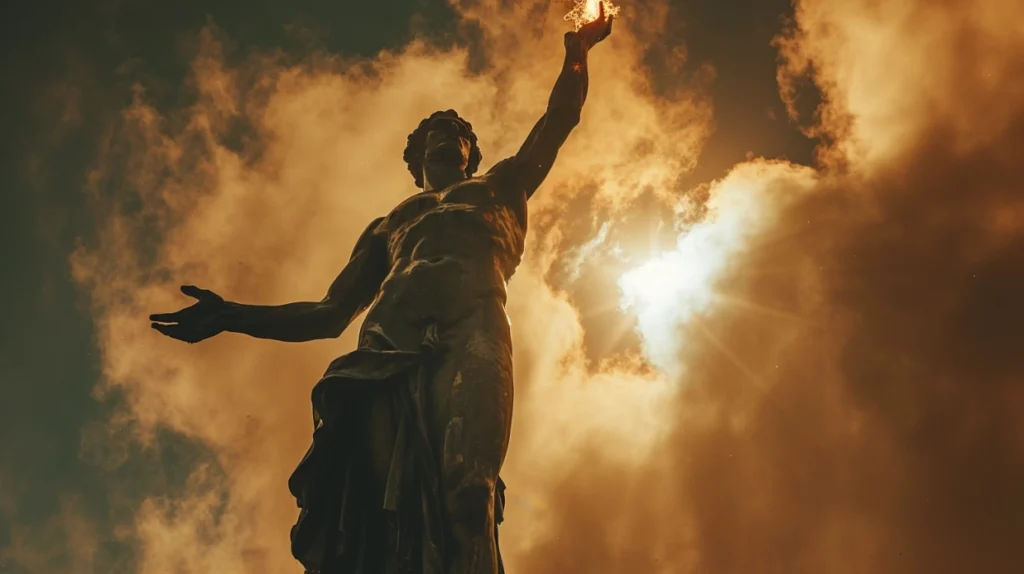
The highest goal of music is to connect one’s soul to their divine nature, not to entertain.
– Pythagoras
The Aesthetic Roots of Western Beauty
People are often incapable of moving and acting with the proper relationship to opportunity. This makes initiative life‘s most sacred mineral. Asymmetric advantage is driven by initiative. Initiative is driven by character, courage and integrity, and often enough a superior nature. This superior nature is rooted in foresight. Foresight often accompanies a combination of high rank values and imagination, as well as a willingness to dedicate one’s life to things of that higher rank nature. This sense of dedication in turn is rooted in higher aesthetics and a metacognitive capacity to accommodate interlinked meaning.
Civilization is a product of initiative and creative will. Initiative and creative well are impelled by a deep sense of one’s own aesthetics. The structures around which people later organize themselves are the product of the original impulse of individuals to see their aesthetic and “Meta-meaning” visions come to life in the world. Individuals build them, what was built coalesces to become the superstructure for others and a kind of S curve of adoption. Original creators must rely on interior conviction because the left tail of the S curve has so little external adoption and takes so long. Like a caterpillar transforming itself into a moth or a man sculpting himself as an ongoing work of art, the transformation required to remain in this state of origination never ends.
Suffering and rupture is the way to remain a locomotive in the process of origination. This will to creative achievement is the same as the will for self-overcoming. And this is before one considers the context of the heroic creator and his aesthetics and mythos. Often what is called civilization or visions of past heroes are bound together, rehashed and hypothecated into hollowed-out derivatives of the original spirit in their creation. They are kitsch.
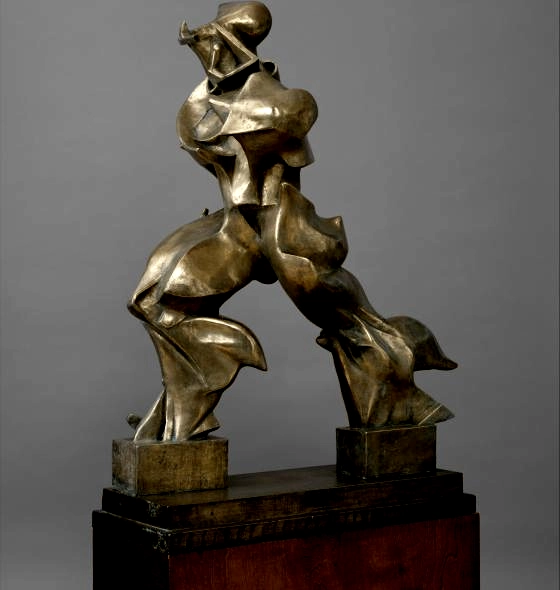
This also means that all civilization arises from novel aesthetics and accompanying heroic works. Not regressive replication. The current fad to revive classicism and “Rome” more broadly is a plagiarist movement. We cannot inhabit the original spirit and original aesthetics of those creators, which lived 2,500 years ago, and from the Earth of the bronze age fashioned certain ideals and values from their own contemporary, heroically-hewn aesthetics. These things represent regressions and subscriptions to a worldview we do not possess and which actually lack the truth value of our own age.
For most of this two-and-a-half millennia, Rome represented the state, the static nature of things which is overthrown by creative originality. Indeed, Rome is more truly anti-civilization. The West, unlike other civilizations, is the phenomenon which overthrows Rome. What is unique about the West is its rejection of Roman, Jupiter-style permanency and instantiation.
It is Jupiter who lacks an internal structure. It is Jupiter who is an absence aspiring to become a presence. It is Jupiter who is wooden, needing Man to become wooden himself so Jupiter can become a real boy. To do so he must render Man into an absence in his stead – an emptiness that attempts to transfer itself onto Man. Jupiter is a bizarre superstition which says, “if I transfer this emptiness onto you, I will be fulfilled. Then I will have become.”
Jupiter dons a cloak and walks about the marketplace, concealing himself among the mortals. “Tell me that I exist!” he cries. ”Tell me that I am the one to pull in Leviathan with a fishhook and tie down its tongue! Tell me that it is I who speaks unto you out of the storm and I who bound the chains of the Pleiades!” Half begging, half commanding, he says to Man, “You must tell me that I am because I cannot vouch for it myself.” Jupiter needs your testimony to re-create himself. That Rome was great, it was great because it was great in its own way. Mimicking Rome is the worshipping of status-quo ante. But to become great, our civilization must likewise become great in its own way. Not make like Job covering his head in shame and ashes because Yahweh has more violence than he.
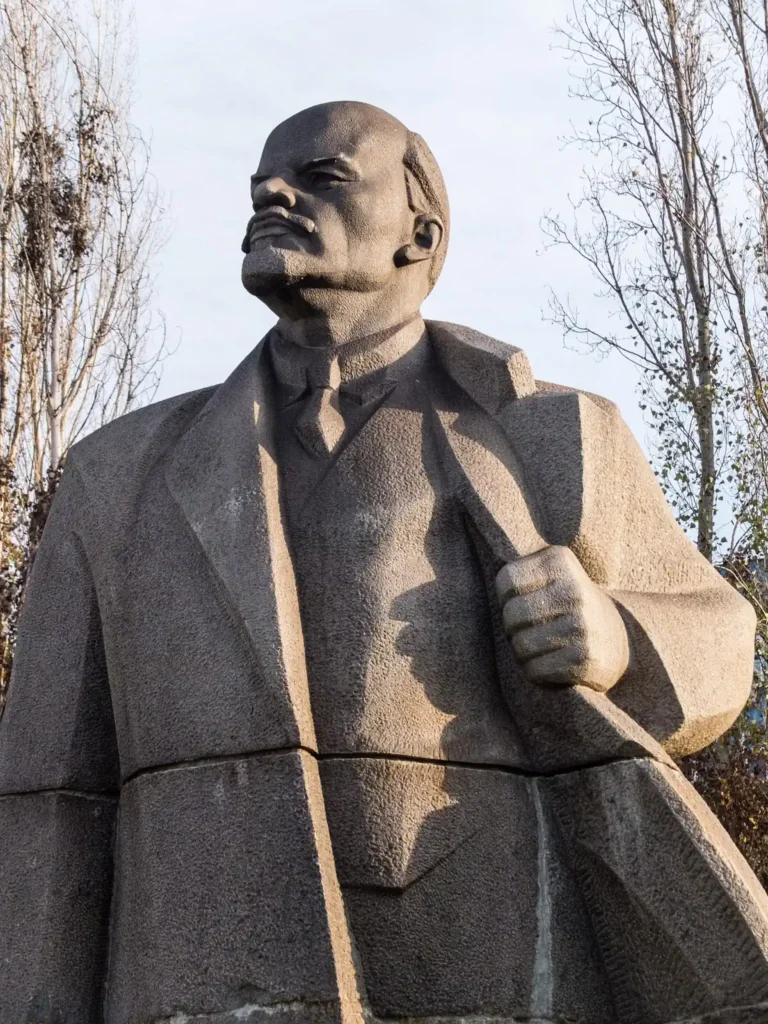
The jealous thunderbolt-wielding sky codependent is nothing but full of envy at Man. He plays a gambit on Mankind: “You must love me. You must prove your love to me. I hand over my emptiness and the cannibalizing death within me. I will make you, Man, dead inside. And in return you will make me come to life.” A kind of cosmic usury and counterfeit where he plots to chisel away and plagiarize Man’s soul collateral, his technological power, foresight and creative courage, and rents it back to him at interest, with the promise of making Man acceptable to him. A deal which always somehow seems to fall apart when Jupiter runs out of soul collateral which must be refreshed again with Man’s originality and future-seeing.
Jupiter must be rendered existent only by our Stockholm Syndrome and complicit refusal to allow our aesthetic, creative power and brilliance to surge forth. But he can only exist because he is not like Man, and therefore we conjure him and genuflect before him as the metaphysical and omnipotent. Jupiter, the god of Rome, requires Man’s adoration in order to use Man as a prop for his own existence, his own plausibility as that which is both not Man and also an anthropomorphized grandiosity, betrayal and harm. Jupiter requires Man to both bring him to life and be the sacrifice to him in order to reify him.
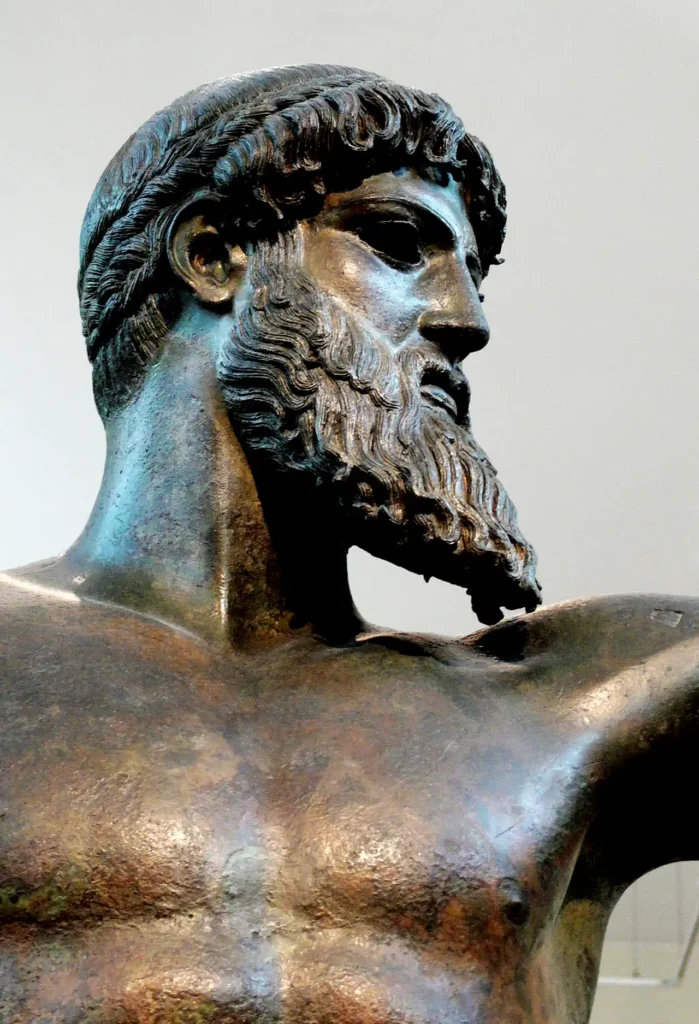
The rehashing of classical aesthetics in place of our duty to build new aesthetics is an act of collusion within the sacrificial cult which uses our creative genius as supply. We plagiarize rather than invent to not offend Jupiter, sacrificing Man’s Promethean opportunity to a sky that will claims to save us but somehow never does. What Jupiter wishes for us, true inheritors of the West, is mortification: the primitive terror of self-dissolution, brought about by the exposure of one’s sense of a defective self and original sin… In other words, this plagiarism is the hope we can spare ourselves death by shame and embarrassment even if our culture is murdered.
Classism, Institutionalism and Plagiarism
There is a courtyard on the outskirts of Mexico City, magnolia trees lifting up above the second story windows. There is a ceramicist there, also classically trained guitarist, who has made a life-long mission of elevating the hearts of young people with the purely immediate, resonant beauty of music. And so in the early mornings from the woody, hand-hewn strings a Bach guitar suite spills through the tops of the trees as the birds sing.
One might be astonished, venturing into the psyche of that composer, as though we breathe in the scent which must have emanated from the psyche of his age. One might be astonished at their capacity to understand his weltanshauung which comes from his whole poetic vision for the future heart of Man. These works, by their nature glorify the heart of Man, transposing the listener into a state of greater nobility, civility, ideal and poise, even if the strings call for pathos or melancholy. The same was once true for classical and neoclassical architecture in their own way.
They become an assumed part of the environment, even if elegant columns of rare marble, and corbels and lintels, and the statues framed in the nichos on the brink of life all resonate together in careful proportion. And their scale, while nonetheless grand, can still be felt to be handmade from an age on the brink of leaving that psyche behind for the dark iron of the industrial age. After the amazement has worn away, they seem to say there is a quotidian quality which echoes with a sense of aristocratic governance and the paternalist art of institution-making. Understood in its day, cultivation and a freshly-inherited Age of Reason converge together to tame and civilize the rambling wilds of humanity’s dirty savagery. These were the highest acts, woven into the aspirational heart of their period. But these were the artifacts of their period, not ours.
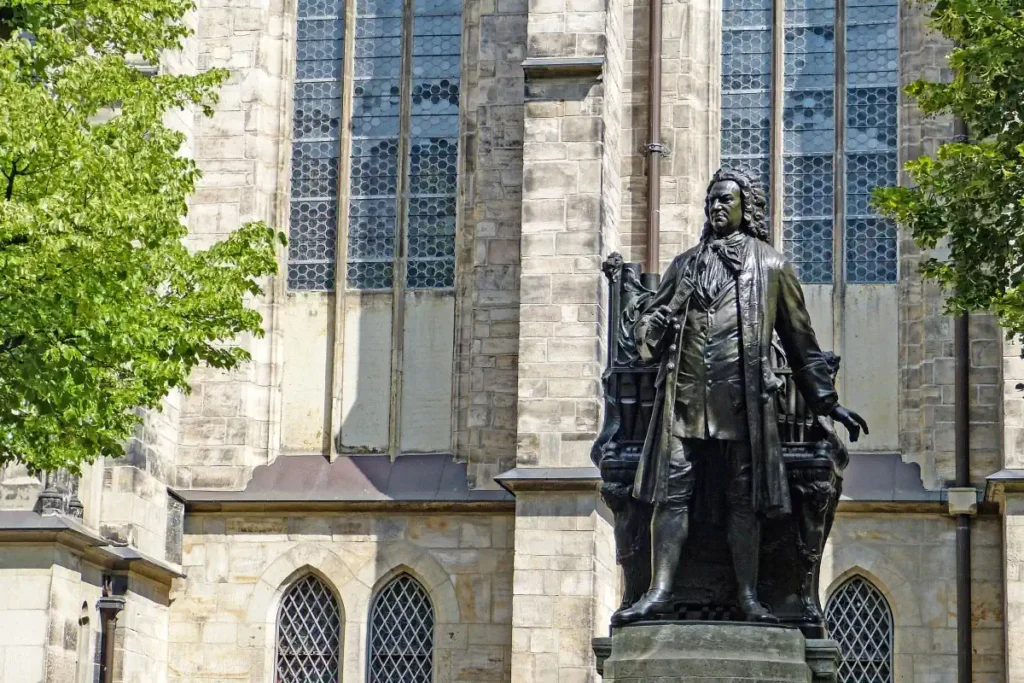
They created through that lens, but not from those priors out of whole cloth. Our age, unlike theirs, now comes preloaded with their ideals as a predicate. And many other things in between also, which are alike or greater in astonishing power, and completely different in personality. You would not see Bach sacrifice his musicianship seeking to edify Gregorian chant. To hold up Classicism as so much more civilized than we are today, and forsake the distillation of the psyche of our own age into works of magnificence is merely plagiarism.
What is the weltanshauung of our age? We’ve cut ourselves adrift of it through modern Jupiter worship.
Our culture exists in a semi state of decomposition. Half of us believe authorship of our own cultural aliveness in the fashion of Bach, on down to the forming businesses and families, is forbidden and anti-orthodox. Half of us out of shriveled hearts pre-obey the ambient ideology to downgrade our intelligence, aspirations, creativity, values and morals for a tiny hostile clique.
Merely resetting to an age where classical values are valorized, a return to staid institutionalism, is an abdication. It is an acquiescence to these demands under the veneer of gentlemanly conduct, as though lovers of Classicism should be known by their erudite gentility while partnering with this clique to degrade the rest of us. One step more sophisticated than the Washington Generals, but only just.
The Song of the Age
What does our Bach sound like? How does our 95 Theses read? What is our Shahnameh? What resplendent form is cast by our Rodin?
Classicism is white noise disguised as art. It is muzak. It lacks the power to uplift because viewers instinctively see it as unoriginal. They instinctively understand it as the stuff approved of by graying geezers and the bloodless types who think of it as a marker of their personal socio-economics.
Classical forms do not emerge from the teaming reality of our age. Their rehashing only serves to generate higher-volume, low-cost output and is a nearly mathematical confession of aesthetic failure and decay. The collateralization and hypothecation of classical forms is not just a failure of worldview, it is a collusion with the financialization of a modern art market which is stripped bare of originality. It is an attempt to placate milquetoast conservatives while still not offending the enemies of the West who securitize artwork to offset their own inflationism.
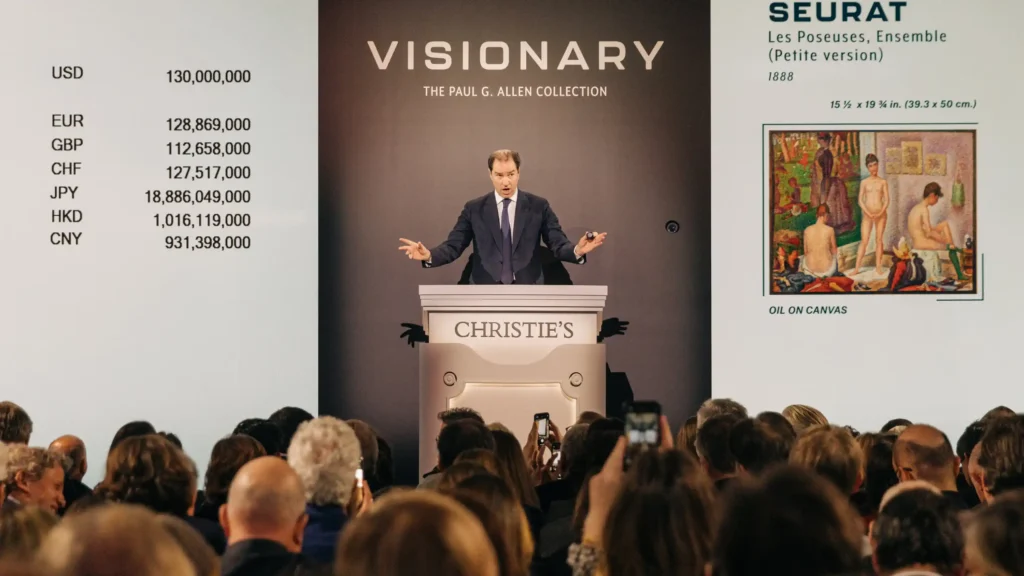
The over-the-horizon and moving into the void is a feature of our age, of our own worldview and shared poetic vision. It is not bound to the fatalism of the past. But it is this way especially because it is original, not because of its defiance of the regressive – defiance is an incidental feature of originality. Ours is the age, as Nietzsche put it, for the remaking of values. Our age is animated by its own spirit of newness and creativity and not backward-looking references to a prior age masquerading as perennial.
In Bach, we can feel the same spirit originating from a poetic and world-disclosing vision. We recognize him these centuries later because we can see true his flowering sense for revealing the meta-truths of the world. Through his poiesis, his weltersheiBung, we instinctually sense his metaphysical understanding of the world coming to life, which is why we are so moved. Today, a rehashing of those same sensitivities is not only impossible, to do so would be an attempt to obscure their poetic origin by reducing his work to a resource which can be exploited.
An enframing of classicism as the defining vessel of high culture or “the West” today is no less materialistic. It is an act of re-collateralization and re-hypothecation, not an act of originary aesthetics. It is this ethos, or rather lack of ethos, which has subjected all forms of cultural as well as financial and technological capital to an endless regression of re-hypothecation by which our civilization has stagnated for two generations. Anemic profitability and capital degradation, and an emphasis on globalization and flattening of technological access through theft has reduced the global quotient of originality which for many centuries has been the defining feature of the West.
Our technological as well as architectural and artistic practices are grounded in a primordial or ontologically-prior poetic and metaphysical understanding of the world. They are always shaped by imagination and meaning-making, even in the hard sciences. Architecture and sculpture and music, like technology, reveal or conceal the world through poetic and cultural presuppositions. But essentially, our own world of the now with our own sense making, own poiesis, our own rootedness, is what great artistry must embody.
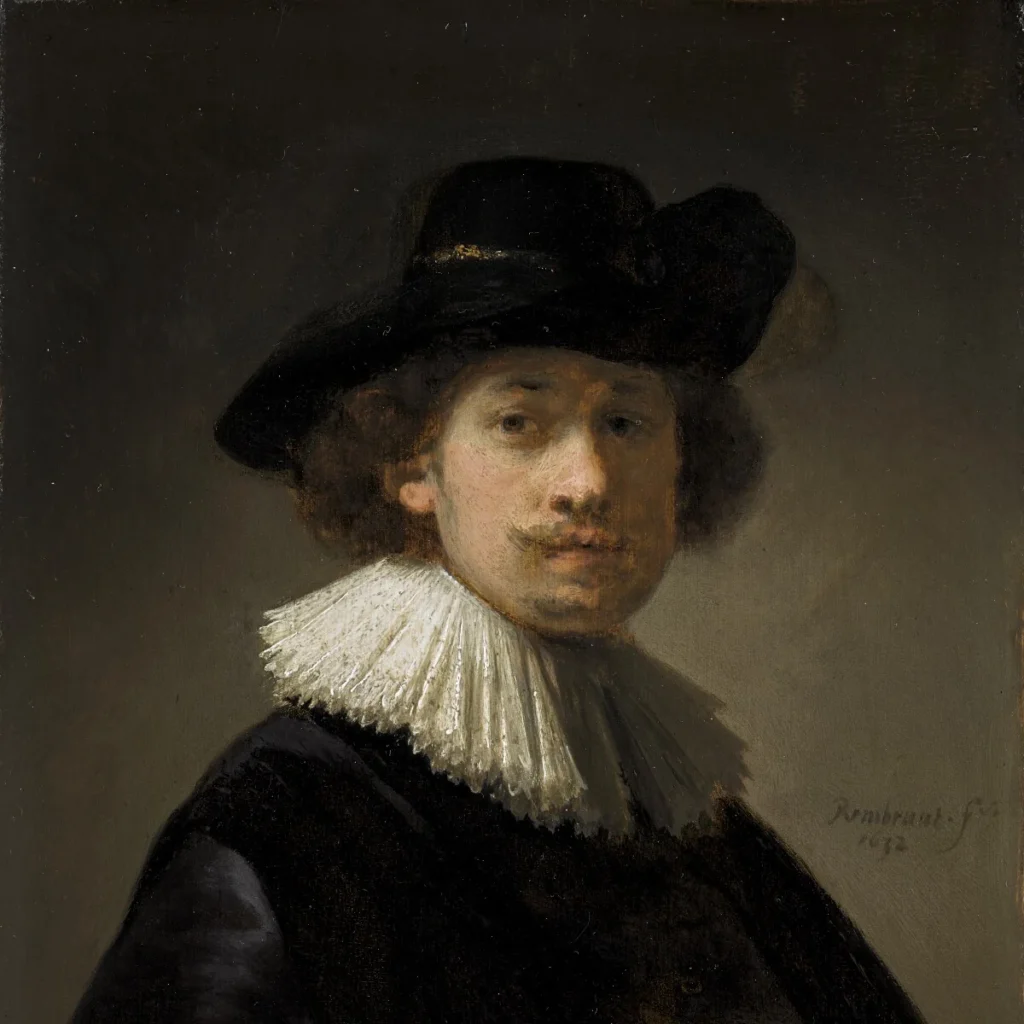
We regress to classicism because the novelty of the Industrial Age has made us so uneasy. And perhaps also because its destructive power was thus far unique in history. This is especially so in the architectural movements of the last century, which often seem to exist only denigrate those prior achievements. Many instances of modernism are efforts to latch onto the redeeming ideals of classicism and merely invert them to a negative valance. But they are nonetheless regressive. If they are not the artifacts of cultural liquidation through ressentiment, they are adjacent conspirators.
We do not avenge the grand Western achievement of classical and neoclassical beauty by re-instantiating it. We avenge it instead by following in the footsteps of the originalism which first fashioned it. This requires us to dig more deeply into the primordial inspirations which called them into being as well as cast new aesthetic imagination and meaning-making from our own unique weltershleiBung world-disclosure.
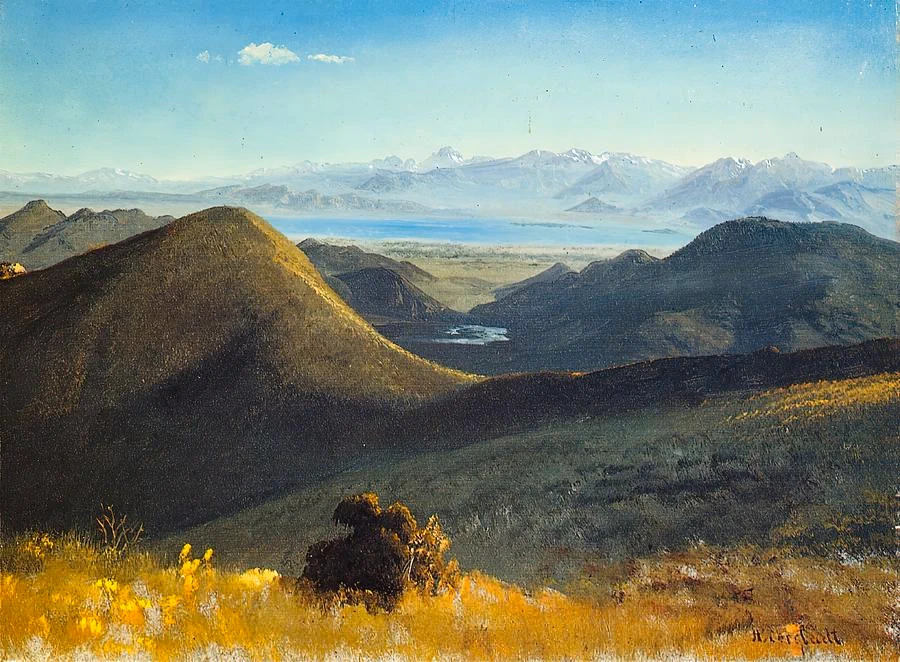
We are at the brink of a new age where a deluge of our “bringing-forth” will loose from the dams of the old, graying, ossified order a profusion of creative integrity and joy. This is truly an unimaginable time to be alive! By reifying Jupiter’s classical forms, we only cheaply, unnecessarily forfeit, squander and betray our precious moment.
If you’re going to try, go all the way. Otherwise, don’t even start. This could mean losing girlfriends, wives, relatives and your mind… and, you’ll do it, despite projection and the worst odds… you will be alone with the gods, and the nights will flame with fire. You will ride life straight to perfect laughter.
– Charles Bukowski
The Stranded Life Within You
What, if some day or night a demon were to steal after you into your loneliest loneliness and say to you: ‘This life, as you now live it and have lived it, you will have to live once more and innumerable times more; and there will be nothing new in it, but every pain and every joy and every thought and sigh and everything unspeakably small or great in your life will have to return to you, all in the same succession and sequence—even this spider and this moonlight between the trees, and even this moment and I myself. The eternal hourglass of existence is turned upside down again and again—and you with it, speck of dust!
Die Frolich Wissenschaft – Nietzsche
The Eternal Recurrence of Nietzsche leaves us with only one choice. Every act, choice, every response, no matter how small, we must live over and over again into infinity. Imagine all the unlived life trapped within you. Imagine all the great work of your soul stranded and orphaned, unlived for eternity.
This is the torture of Prometheus chained to the rock, his unlived life stolen from him as he grows old into the eons. This calls us in our Promethean Age to a kind of radical confidence, radical outpouring, radical originality. It strips from us the supine, sacerdotal rehashing of classicism and other kinds of regression. The sky empty of gods fills us with a kind of torrential freedom in which we come face to face with our own duty to create and impress great meaning and beauty onto the firmament.
Heidegger describes in “The Question Concerning Technology” (Die Frage nach der Technik), that technology, like artistry, emanates from a primordial poetic vision of the world, an inborn desire for disclosing the Meta-truth of things. That technology, in its primordial sense, is not merely a tool or means to an end but is tied to a revealing of the world. This “bringing-forth” or poeisis is akin to artistic creation, which is fundamentally poetic. The ancients described the capacity for the creation of a Bach guitar suite and a nuclear engine to emanate from the same faculty. This poiesis is the thing ripped from Prometheus, and the stranded life which remains inside us in Nietzsche’s Groundhog Day scenario. Derivative, regressive and rehashing of bygone artistic forms serve only to further occlude and conceal this raw, forward-seeing creative confidence which we absolutely must call forth in the hearts of our people if the West is to survive. Calling this forth is the highest priority of our cultural moment.
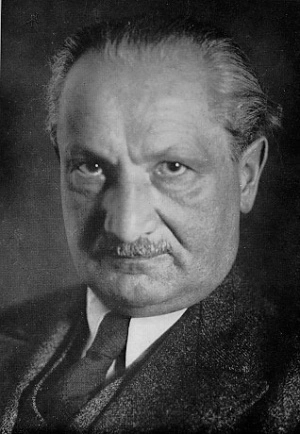
The aesthetic and technological disclosure, Welterschließung, this bringing forth, is not merely instrumental; it is a mode through which a particular vision of reality is disclosed and articulated to our people in our own moment. It is grounded in an ontologically-prior -not historically prior – poetic and metaphysical understanding of the world but permeates hearts and is immediately known.
A New Epoch, a New Aesthetic
We will never know how much stranded life we have left on the table. But we do know that merely edifying and mirroring historical aesthetics can foreclose on poiesis just as gravely as a celebration of dehumanizing brutalism. They both obscure Promethean poetic originality by reducing artistry and architecture, and indeed the whole of the world, to a “standing-reserve,” a Bestand, a resource to be farmed and exploited. In effect, they both leave our greatest stones unturned. They serve one purpose: to lock our soul’s destiny down on the rock, never to be lived for fear it may disrupt.
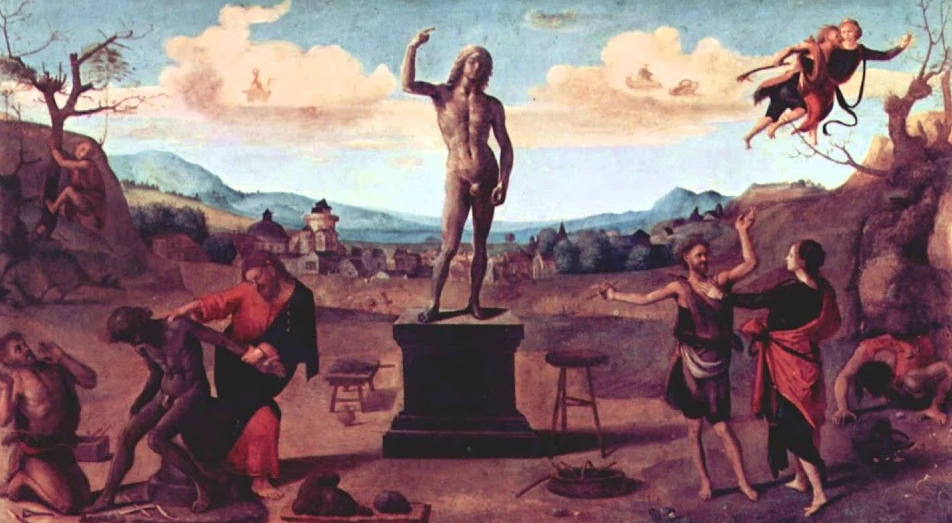
We cannot replace the great bringing-forth of the human spirit through the historical rhyme scheme of Greco-Roman art and/or neoclassical architecture. They are platitudes in concrete. The Randian vision of the architect does not design what is merely commission-worthy – he seeks to bring all who enter into a new Weltanschauung, a new poetic worldview. His charge is among the most profound of all professions. He unlocks the poiesis, the ripe, vivid encounter with the creative power in every visitor, the instinct which seeks meaning-making and elevates our attention to the higher ideal, to the stranded life remaining within us. He is the Vanguard of the soul in brickwork.
Capacity for abstraction is of central, prime value to civilization. It is on the basis of inspiring, enchanting meta-meaning that people can create community and cooperate to build civilization. The perversion or outright excising and demolition of abstract meaning is a tool of unrestricted warfare against civilization. Materialistic brutalism is one such brazen, well-understood tool of war. Classicism, however, is as well as it still lacks the meta-meaning of our age and constitutes a materialistic, literal representation of a bygone age instead. It is obsolete in the way which the West always instinctively recognizes. Literal representations of Greco-Roman patrimony are inimical to the meta-meaning upon which to rebuild a civilization. They may represent noble things, but they are both literal, and they are not ours.
Fine art works and great Colossi are symbolic. Symbols are by definition the representations of an abstraction. Mechanical literality is not the basis for great meaning. Civilization has its roots in a-priori aesthetic blueprints. Civilization originates with art and aesthetic symbolism.
In the 1600’s the figure of Columbia was originally a noble savage – a female version of Dionysus with feathers and buckskin and primitive genius. She took on a similar aesthetic spirit as the people of the time looking onto vast virginal forests of America. Columbia was later syncretized with the goddess Liberty because American forests could be privately owned as a token symbol of manumission from the feudal serfdom of Europe. A classical mimicry of Columbia as a public art gimmick is sacrilegious, dishonoring both its original meaning and the unique American drive for newness. A representation of the outward appearance of a thing without cultivating inward truth value. A hypothecation of the past without an expressing anything to the modern heart.
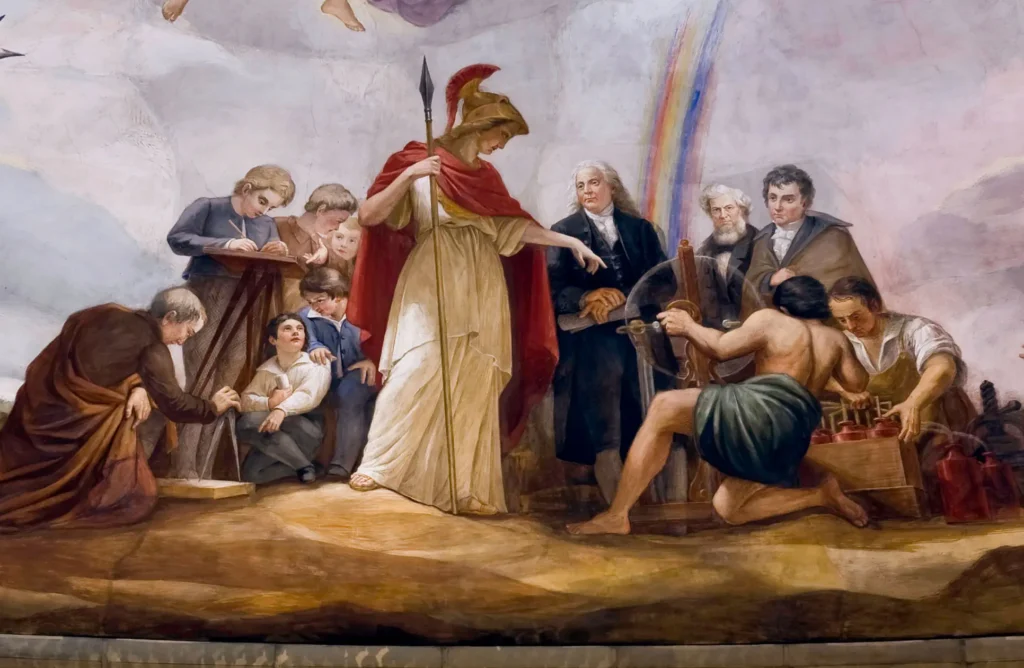
As a contemporary example, Prometheus is also a face of Dionysus but which reflects Man’s native power, excellence, strength and industriousness. He is a similar, but vastly more powerful symbol to Columbia and Liberty and in a masculine, post-industrial, technology-enabled form for a bold, new America. His symbol reflects an American landscape which has been metabolized but where new frontiers of technological, and indeed mythotechnological expansion and liberation are here at our doorstep. Prometheus is not only the archetypal locomotion of the West-qua-West. He is the Titan of Freedom, the Pursuit of Happiness and Manifest Destiny. The most powerful of original core American ideals, the most ripe and essential aspects of what it is to be American and Western. And he reflects the spirit of our age more than any other archetypal figure.
Great artists do not “talk their book.” They do not say, “we ought to make something literal and uninspiring because this is just what we happen to be capable of doing.” Artists worthy of the charge instead seek always to rise to the occasion, become more capable of more meaning and more originality and to outpour even greater quotients of beauty. The work stands alone, absent of self-promotion because the work is meant to touch the archetypal heart residing within all onlookers.
Take Rodin as an example of this from a prior age. There are aspects of his sculpture that aesthetically rhyme with Impressionism. But there are also features which are faint precursors to the Futurism of the 1920’s. They rhyme with historical forms of Classicism, but with an obvious break from dogma and greater creative license for aliveness.
One intuits that these breaks from classicism had something to do with the way industrialization unlocked man into greater individualism, yet still reflected him bound by the archaic materials of the day: steel/iron, coal/steam power, etc. All in all, this expressiveness about his milieu which was not deliberate or contrived was extremely poetic.
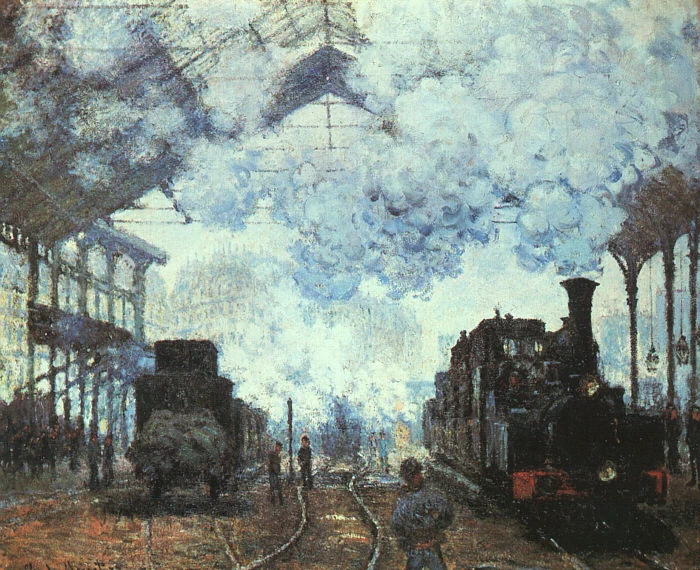
He experienced a period of profound transition that was uniquely his own, straddling the Romantic and the Modern. His work reflects the tension: the yearning for mythic, expressive grandeur colliding with the fragmenting, accelerating inhumanity of the Steel Age.
There were aesthetic rhymes with Impressionism. But in conservative Victorian fashion he still was not given to the excessive abstraction of later sculptors, although his figures often ripple with similar vitality which presaged the Impressionists. The nearly grotesque features of The Burghers of Calais or The Thinker remind one of aspects of Da Vinci’s drawn portraits, of the anatomy of Steel Age man accentuated to illustrate the tension of the era. They echo with how Impressionist painters depicted fleeting sensations rather than static forms. His sculptural pre-Impressionism visually suggests a kind of ephemerality.
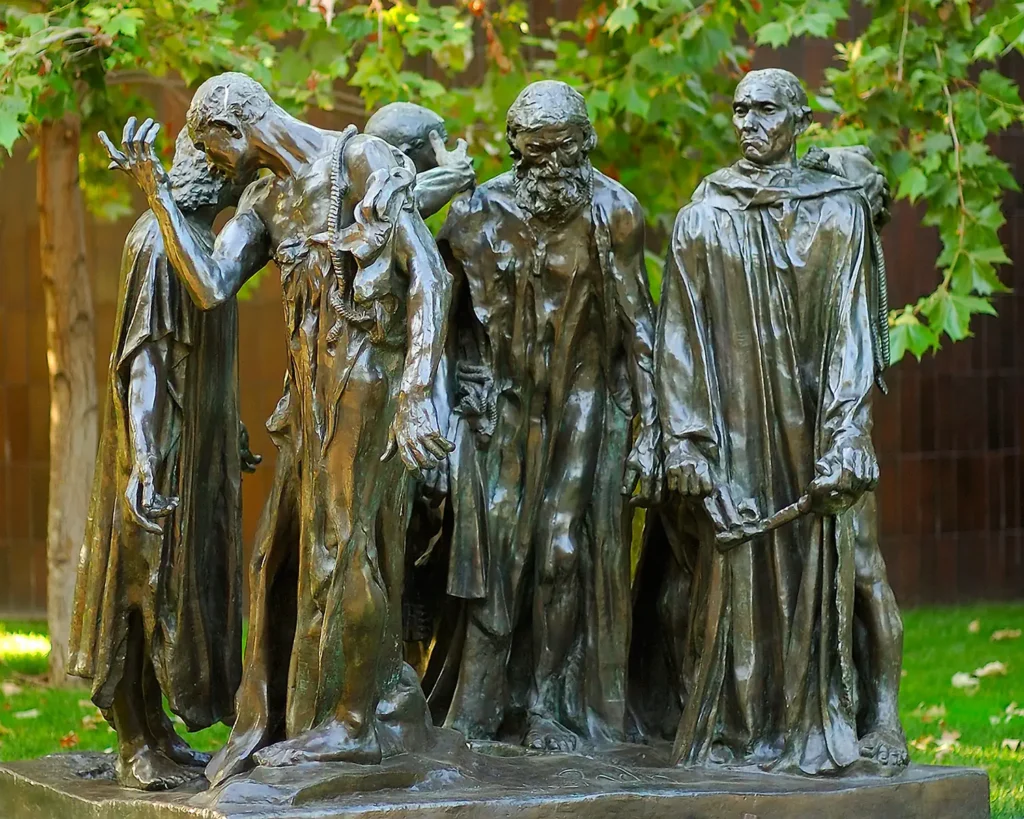
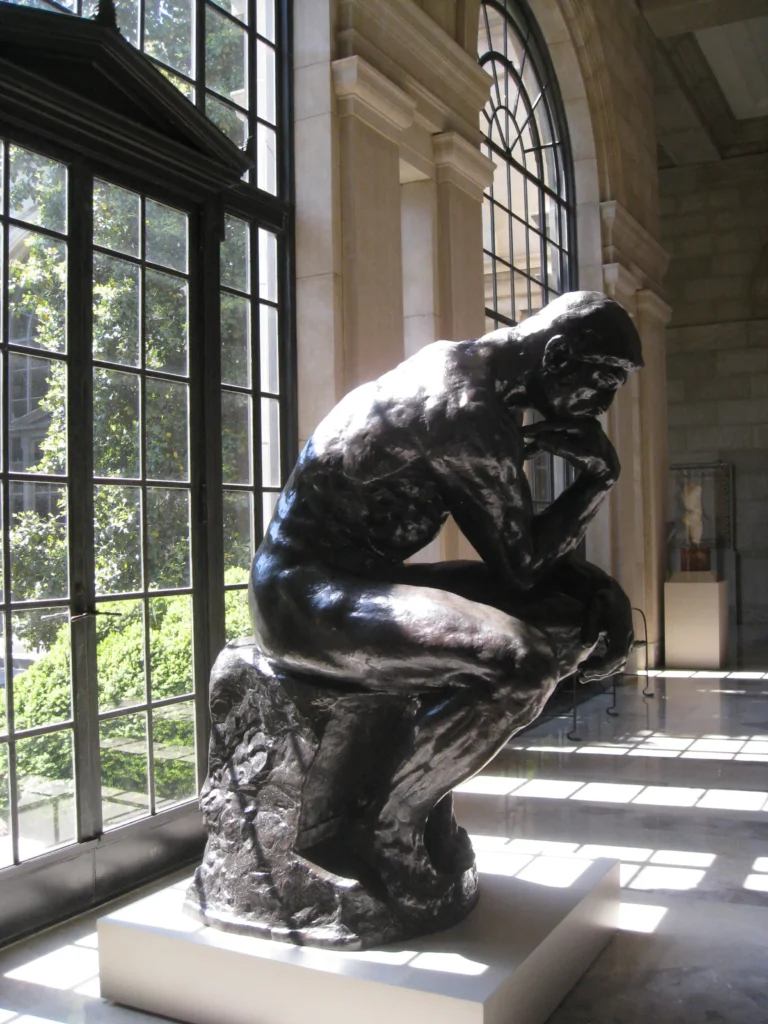
Rodin was also a breaker of classical dogma. Where classical sculpture idealized the body and moralized form, Rodin deconstructed those ideals to reveal a newly-exposed raw aspect of Man: fragmentation and tension within his epoch, nonetheless impelled by the same Manichean struggles and desires. The Walking Man, with its deliberate incompleteness, is as much a statement of industrial alienation as it conveys highly elegant motion. It was as though he anticipated both Futurism’s dynamism and the spiritual unrest of contemporary Existentialism.
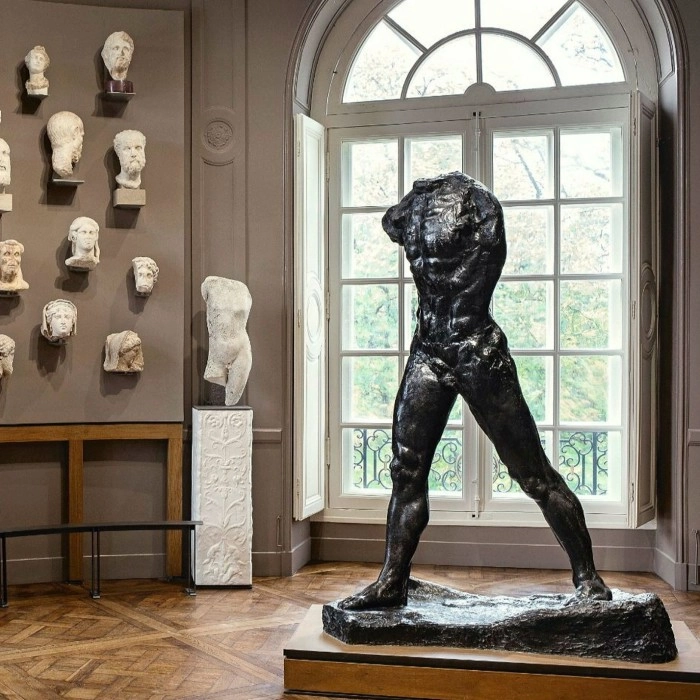
Beyond the “-isms”, his work was like an alchemical forge of metamorphosis, a romantic and modern sensitivity where the classical begins to fracture into the expressive. Truly something emergent from Rodin’s age alone.
Artistry Must Honor
Apart from its own original merits, classicism functions more today as a cultural suppressant. If we thought highly of ourselves, would we fling ourselves down prostrate to the artwork of 2,500 years ago? Or would we create from the depths of our own hearts single switch reflect the spirit of our own age? To claim no one from our age can create great art is the same instinct which seeks the deconstruction of the West. The passive Epimethean laxity evident in classical Greco-Roman rehashing which does not seek the soul of the age is an ally with the static down-winding entropy of Jupiter.
Prometheus, the Titan of artistic outpouring, the Titan of claiming the stranded life within you, is not afraid of controversy. Not afraid of originality even if it means losing sales. The act of Colossus building, however few times it has been achieved in the world, is not the tool of a commercial brand. They don’t hang Thomas Kinkade in the Metropolitan.
For an outsider, without a depth of native-inhabited sense for the long arc of Western mythopoetic genius, one might ascribe a kind of children’s book neoclassicistic version of what is “Western” might mean. But artists, especially the less than a once-in-a-Century Colossus builder, are not bargainers. They are not tourists. They embrace creative destruction with unapologetic strength and integrity.
The ancestor worship bound up in classicism leads to the same reneging on Man’s nature which Prometheus refused to do. Paying homage to the ancestor, repaying the debt for bringing you here, and extending this debt onward back into innumerable generations, grows the debt to an impossibly large magnitude. The innumerable generations are subsumed into one great sky father ancestor. The impossibly large debt means permanent supplication of Man to the sky father. Classicism is a supplicative homage to inheritance, not a vivification of Man’s agency and original, creative triumph. In the West, unlike imperial China, Middle Eastern Islam, or animistic Africa, great emblems of national power and beauty are explicitly for the purpose of the latter.
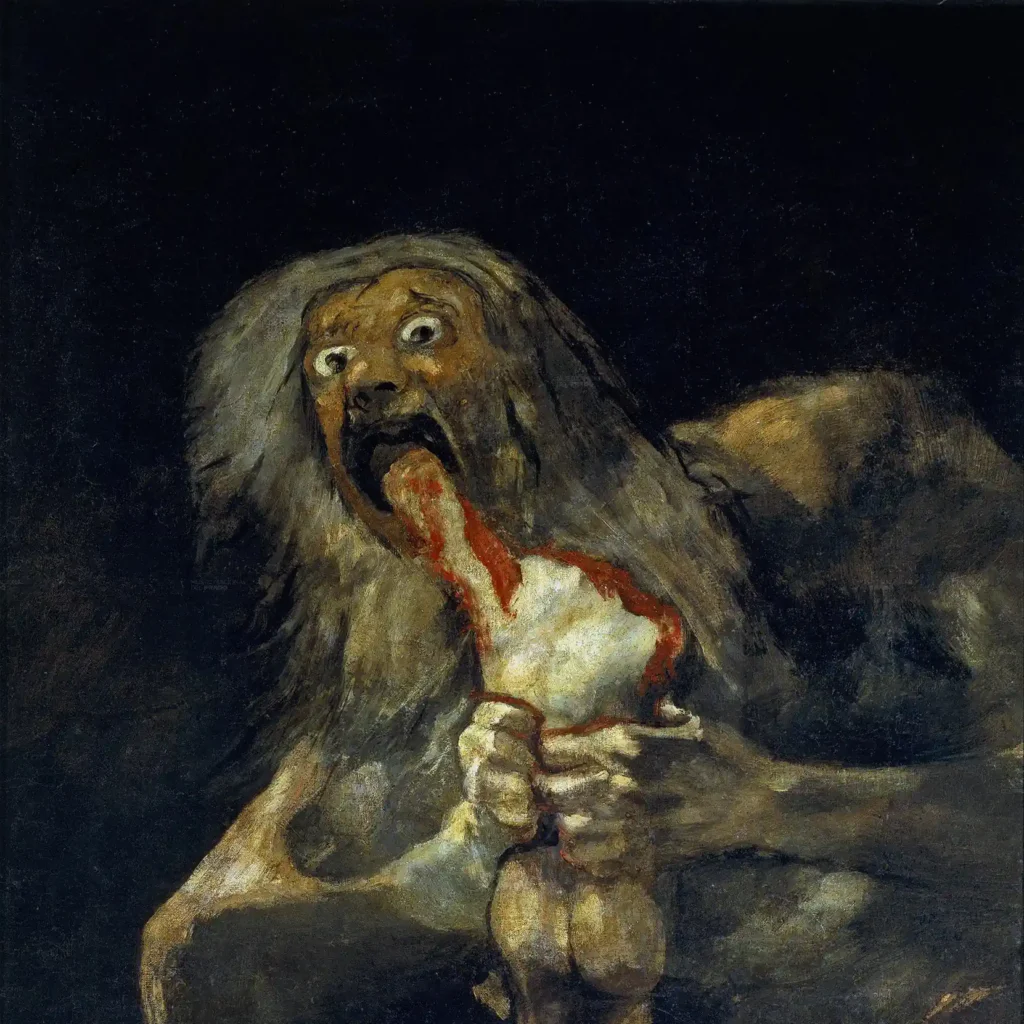
The Western artist exonerates the risk taker as the hero. They conjure their own aesthetic destiny and make it manifest on this plane. They are marked by the most involuntary trait: where in whom no feature is left unladen without elegant meaning in relation to the whole. They are predominated by that terrible, resilient, single-minded egoism which gleams like brass in the evening sun. The stress of their hammer strikes justify all eternity.
They care about inspiring you with the great beauty and subtlety of their works, not hoist a neon sign “Open: Western Civilization Here!” You will not find them in the museum gift shop with figurines from Bulfinch’s Mythology. Unbridled uplifting, vitalizing beauty is felt in their work like a silent, undeniable current from deep in the ocean, reflecting the utterly awake, tremendously vivid reality of Man and his impossible nature here on this far away planet. There is no soporific, forgetful feature lulling onlookers to further anaesthetize. They wrest the flame of Man’s dynamism and metamorphosis and bring it to life here among us.
-RC
